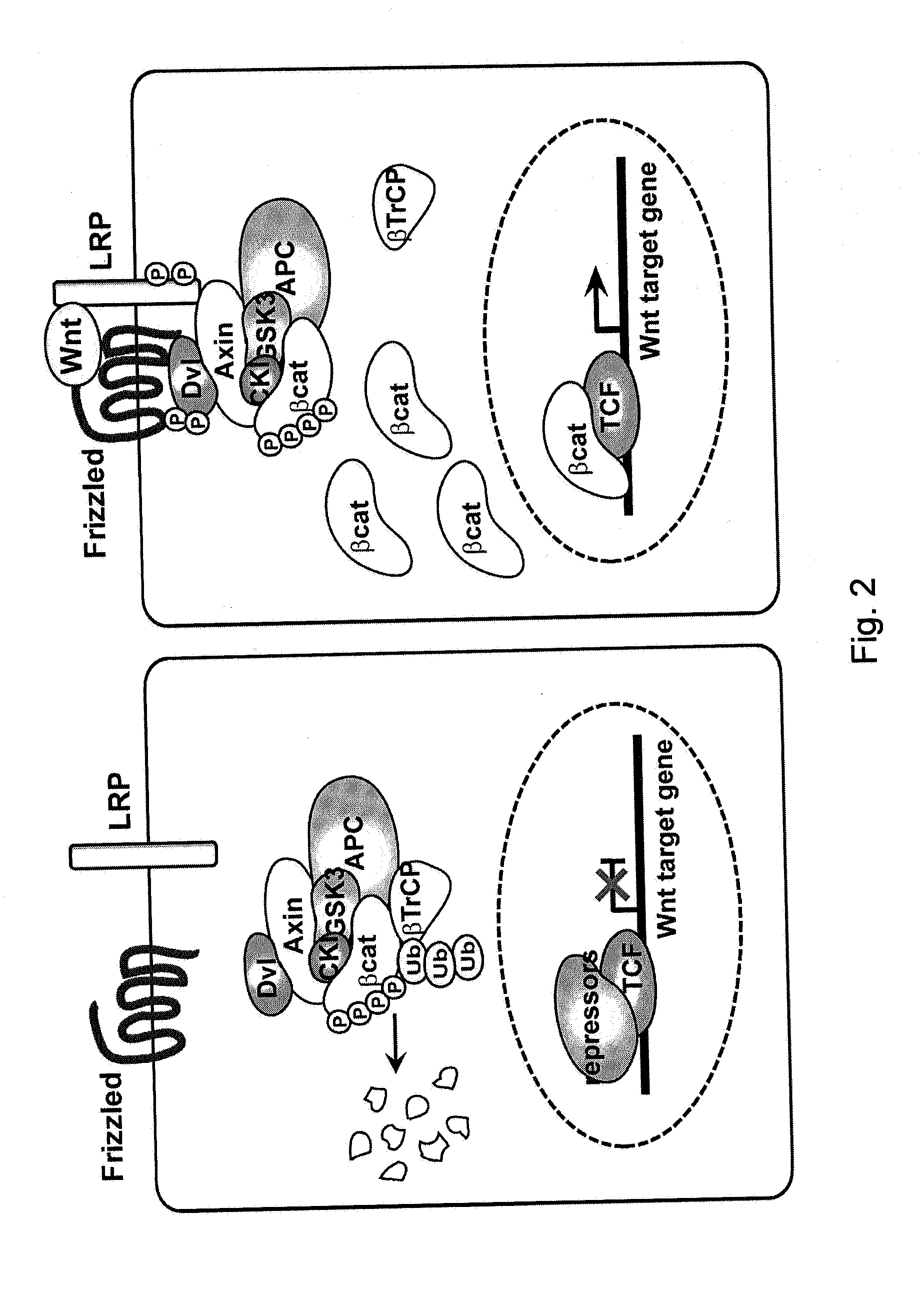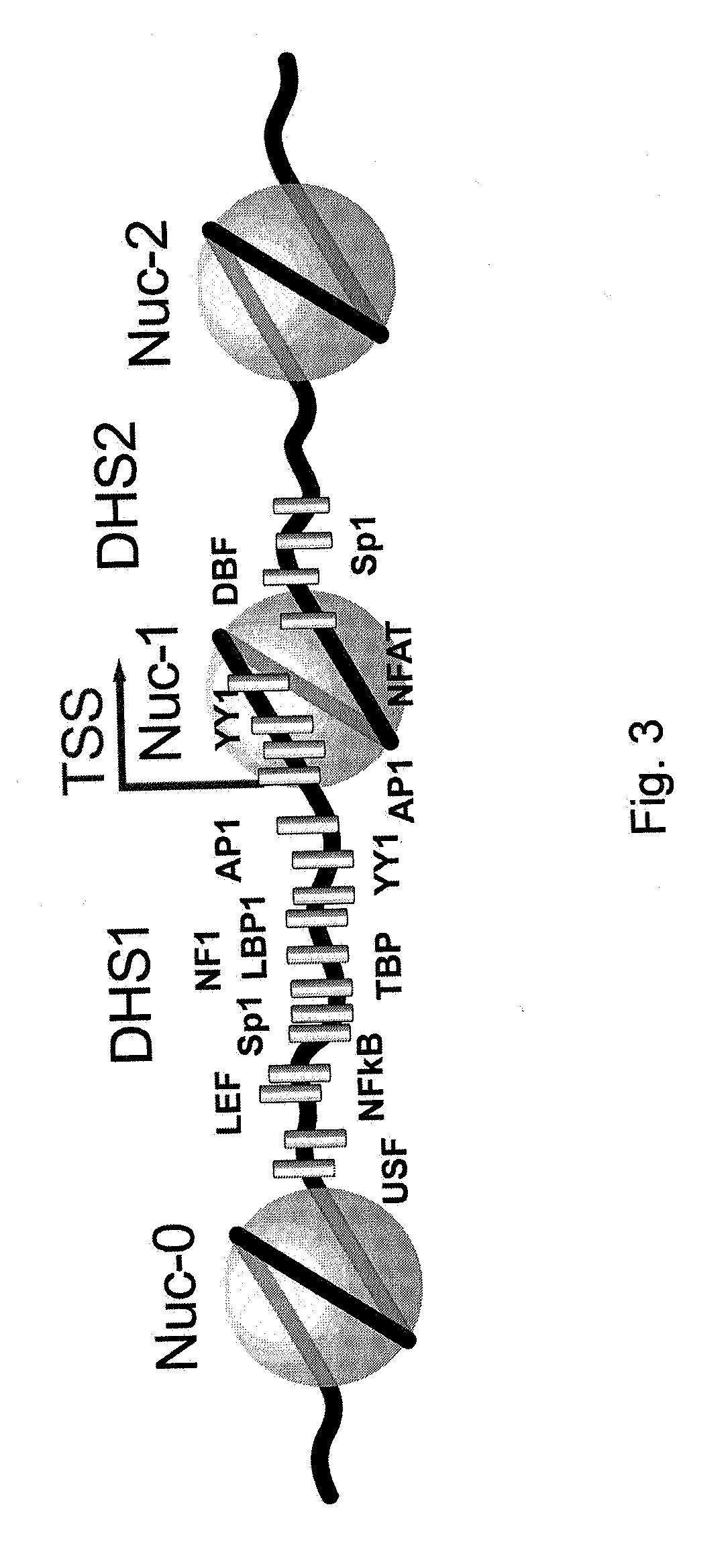Methods for activating retrovirus in latent infected cells, and compounds for use therein
a technology of latent infection and retrovirus, which is applied in the field of antiviral therapy, can solve the problems of not treating patients, neither alleviating symptoms, and lacking complete cures, and achieves the effects of increasing the transcription of retroviruses, increasing the wnt pathway signaling, and increasing the transcription of said retroviruses
- Summary
- Abstract
- Description
- Claims
- Application Information
AI Technical Summary
Benefits of technology
Problems solved by technology
Method used
Image
Examples
example 1
Novel Transcription Regulatory Mechanism of Latent HIV LTR: Role of Wnt Pathway Activation on LTR Nucleosome Structure
[0135]The Wnt pathway is a highly conserved signaling pathway controlling a variety of biological processes. In the absence of Wnt, b-catenin is continuously degraded by the cytoplasmic destruction complex (FIG. 2). The destruction complex, composed of the core subunits APC, Axin1, CK1 and GSK3, binds and phosphorylates b-catenin, followed by its ubiquitination and proteosomal degradation. In the presence of Wnt, ubiquitination of phosphorylated b-catenin is blocked, the complex becomes saturated with phosphorylated b-catenin and functionally inactivated. Newly synthesized b-catenin then accumulates and is transported to the nucleus where it complexes with TCF / LEF to activate target genes (FIG. 2).
[0136]Interestingly, the HIV LTR harbours a TCF / LEF site within DNase hypersensitive site 1 (DHS1) within the LTR (FIG. 2). TCF / LEF transcription factors together with b-ca...
example 2
Purging Latent HIV Using Small Molecules / Growth Factors Leading to Transcriptional Activation of Latent LTR
[0141]The role of Wnt pathway activation on LTR transcription is examined. The ligand R-spondin was recently shown to accentuate Wnt signaling (De Lau et al. 2011, Nature 476(7360):293-7).
[0142]It was presently found that activation of the Wnt pathway in J-Lat / S-Lat or 1G5 cells via treatment with the ligands Wnt3A or R-spondin alone (or together synergistically), as well as the GSK3b inhibitors LiCl and BIO, resulted in de-repression of latent HIV LTR (FIG. 5).
[0143]The middle panel of FIG. 5 indicates the synergistic activation by using a Wnt3a-conditioned medium (medium from cell line with ATCC accession number CRL-2647) and a R-spondin1-conditioned medium (medium from cell line Human embryonic kidney cell-line 293T (HEK293T)) containing a stable integration of the R-spondin gene that express and secrete R-spondin (such a cell line can be obtained commercially from R&D Syste...
example 3
Primary Model Systems of HIV Latency
[0146]While Jurkat and SupT1 cells are a good well-established model for studying HIV transcription, they do not fully complement normal CD4+ T cells. A latency model in primary activated peripheral blood mononuclear cells (PBMCs) or purified CD4+ primary Tcells was therefore established.
[0147]PBMCs were infected with VSV-G pseudotyped LTR-Tat-IRES-GFP virus particles and examined establishment of a latent phenotype, as in the cell line latency models (J-Lat / S-Lat). Briefly, PBMCs were Ficoll-purified from buffycoats of healthy donors, activated with phytohemagglutinin (PHA-L) and Interleukin-2 (IL-2), followed by virus infection. Five days after infection, GFP negative cells were sorted by FACS, placed in culture. Importantly, treatment of these cells with PMA or TNFa activated HIV expression, identifying the presence of a population of latently infected cells similar to what was observed in J-Lat / S-Lat. Thus, even in the context of a fully activ...
PUM
| Property | Measurement | Unit |
|---|---|---|
| Molar density | aaaaa | aaaaa |
| Concentration | aaaaa | aaaaa |
Abstract
Description
Claims
Application Information
 Login to View More
Login to View More - R&D
- Intellectual Property
- Life Sciences
- Materials
- Tech Scout
- Unparalleled Data Quality
- Higher Quality Content
- 60% Fewer Hallucinations
Browse by: Latest US Patents, China's latest patents, Technical Efficacy Thesaurus, Application Domain, Technology Topic, Popular Technical Reports.
© 2025 PatSnap. All rights reserved.Legal|Privacy policy|Modern Slavery Act Transparency Statement|Sitemap|About US| Contact US: help@patsnap.com



